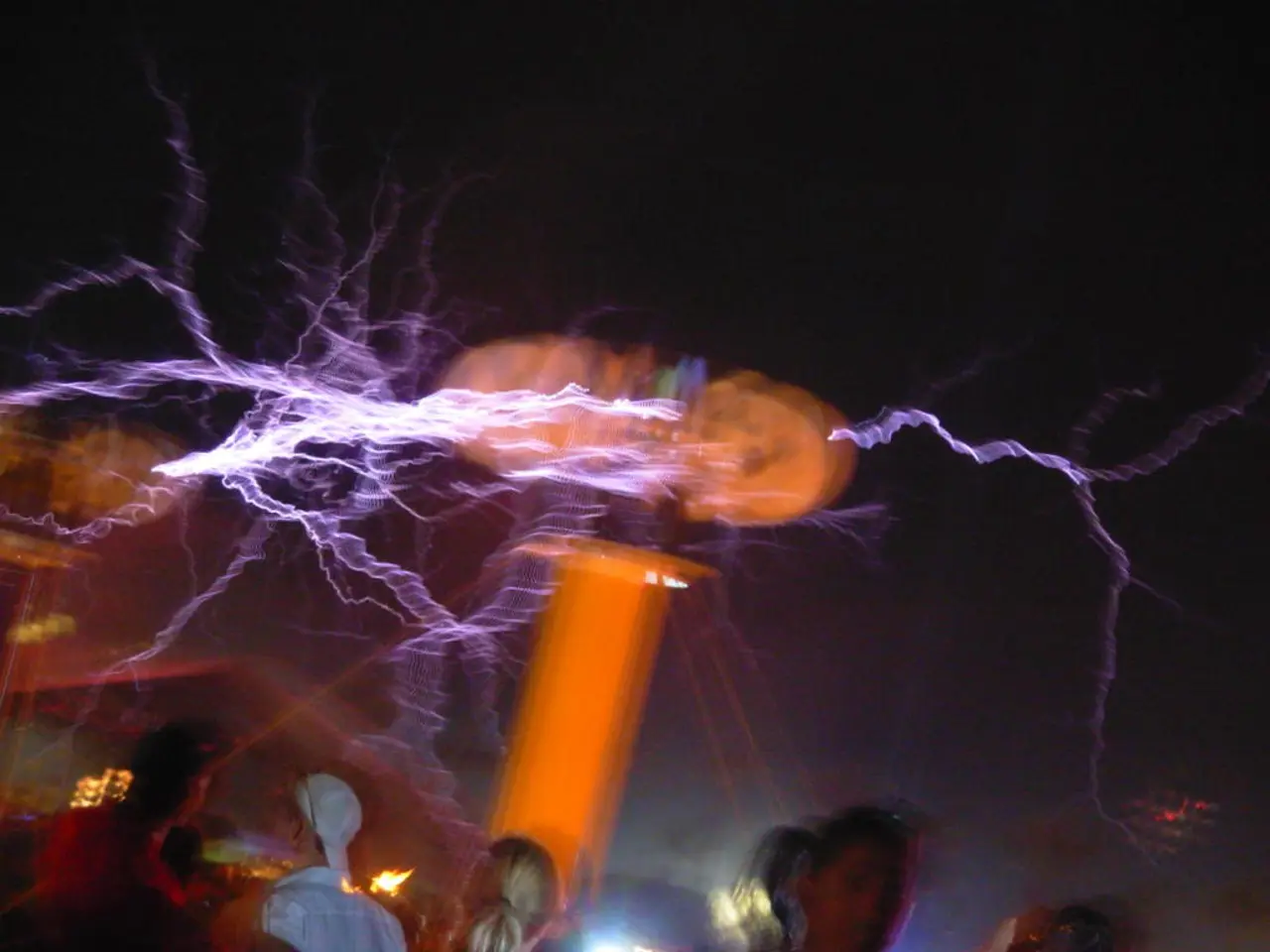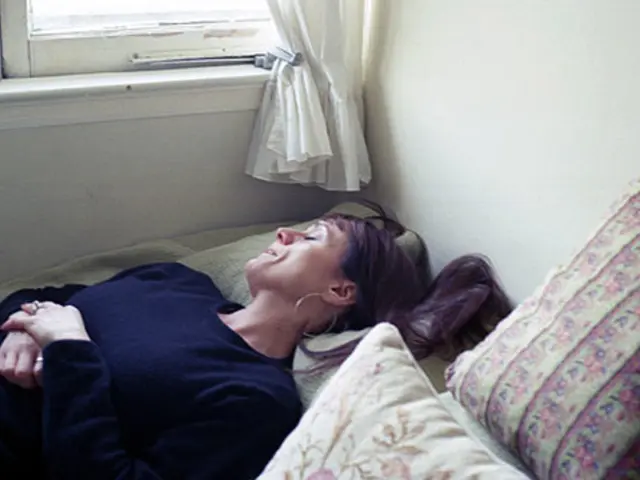Persisting Myth about Lightning Safety Continues to Pose Risks Despite Disproving
Outdated Lightning Safety Advice Debunked: The "Lightning Crouch" is Ineffective
A well-known piece of lightning safety advice, the "lightning crouch," is no longer considered effective by experts. This position, which involves crouching low on the balls of your feet, does not significantly reduce the risk of being struck by lightning and can give a false sense of security [2].
According to the National Lightning Safety Council (NLSC) and other authoritative sources, the recommended actions if caught outdoors during a thunderstorm are as follows:
- Avoid open areas and do not be the tallest object around.
- Stay away from isolated trees, poles, or metal objects which can attract lightning.
- If no shelter is available, find a low-lying area such as a ditch or depression but avoid lying flat on the ground to minimize ground current exposure.
- Reduce your contact with the ground as much as possible by squatting with your feet together––this is a last resort if no shelter is available [1][2][4].
The best protection is to seek immediate shelter indoors or inside a fully enclosed vehicle if lightning is imminent [1][2]. As John Jensenius, a lightning safety specialist with the NLSC, states, the best action during a thunderstorm is to move as fast as possible to a safer place [3].
The NLSC and the National Weather Service stopped recommending the crouch in 2008 [6]. Chris Vagasky, a meteorologist with the NLSC, suggests reminding people to consider canceling or postponing activities if thunderstorms are predicted [7]. The key focus of lightning safety is to avoid entering into a dangerous situation in the first place, or in knowing how to get out of one [8].
It's important to note that if a lightning channel approaches from directly overhead or very nearly so, one is likely to be struck and either killed or injured, regardless of whether standing or in the crouch position [5]. Therefore, the priority should always be to get indoors or to a hard-topped vehicle as soon as thunder is heard, following the adage "When thunder roars, go indoors" [1][2].
In 2024, the NLSC recorded 12 lightning fatalities [9]. Practicing lightning safety, according to Jensenius, is a minor inconvenience that just might save your life [10]. The National Weather Service warns that people who believe the crouch is effective might become complacent and forgo seeking a safe shelter until the very last minute [4].
In conclusion, the "lightning crouch" is an outdated and ineffective piece of advice for lightning safety. The priority is to get indoors or to a hard-topped vehicle as soon as thunder is heard, following the adage "When thunder roars, go indoors."
- In the future, workplaces should consider incorporating workplace-wellness programs that include information on health-and-wellness practices, such as fitness-and-exercise routines and proper nutrition.
- Environmental-science students are increasingly focused on understanding and addressing climate-change issues, such as decreasing carbon emissions and promoting renewable energy.
- General news outlets like Gizmodo often publish articles on the latest advancements in science and technology, including breakthroughs in mental-health therapies and treatments.
- The misconception that the "lightning crouch" provides significant protection against being struck by lightning continues to persist, leading to potential accidents and danger.
- Crime-and-justice experts are researching the impact of trauma on mental-health, including how exposure to violence and other traumatic events can lead to long-term mental-health issues.
- The field of environmental-science is critical in understanding and addressing environmental pollution, including air and water pollution, and the environmental impact of transportation and industrial processes.
- The National Weather Service and the National Lightning Safety Council (NLSC) recommend finding a low-lying area like a ditch or depression if no immediate shelter is available during a thunderstorm, and to avoid lying flat on the ground to minimize ground current exposure.
- Mental-health professionals continue to develop new therapies and treatments for a variety of mental-health disorders, such as anxiety and depression, to improve the overall health and well-being of individuals.






